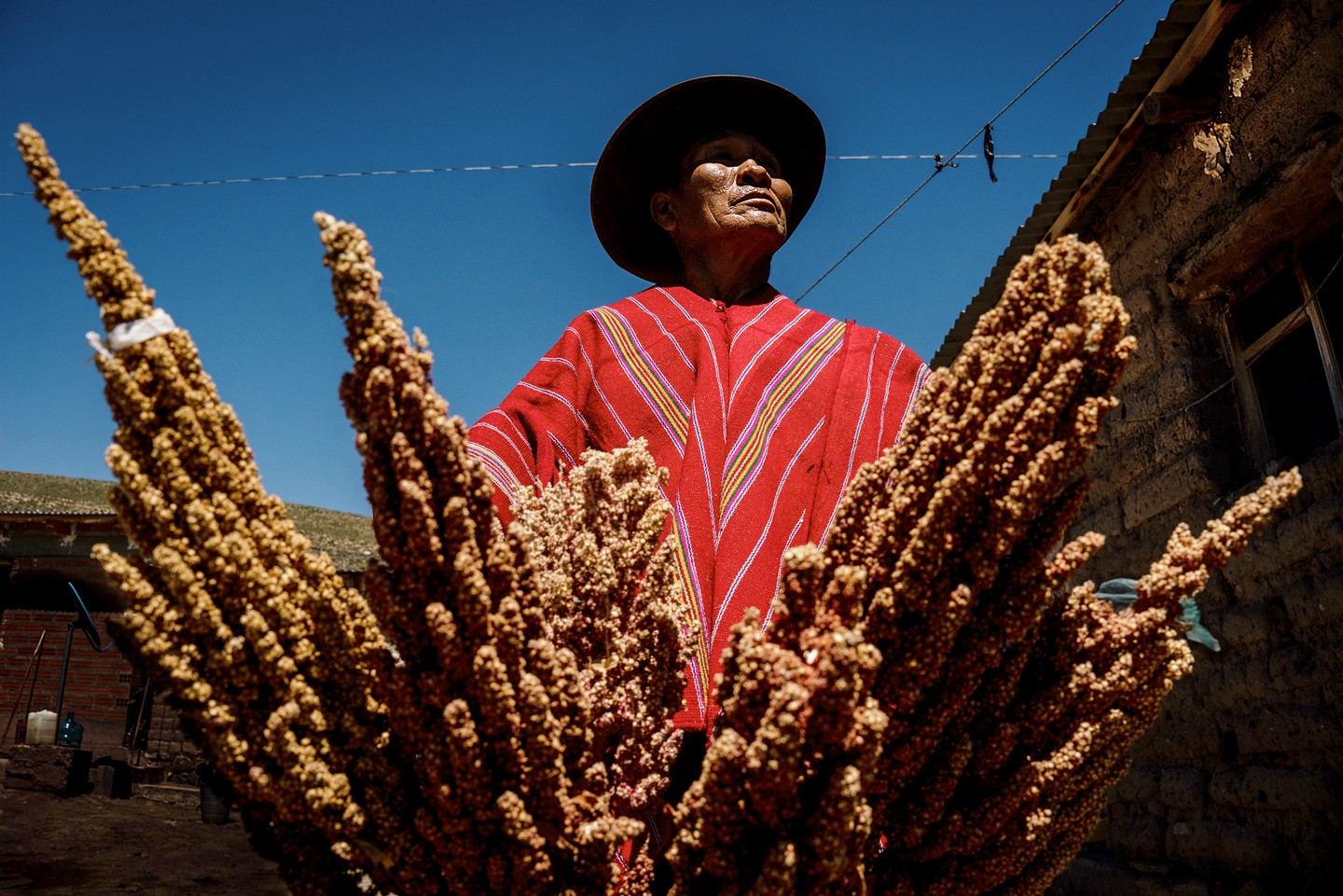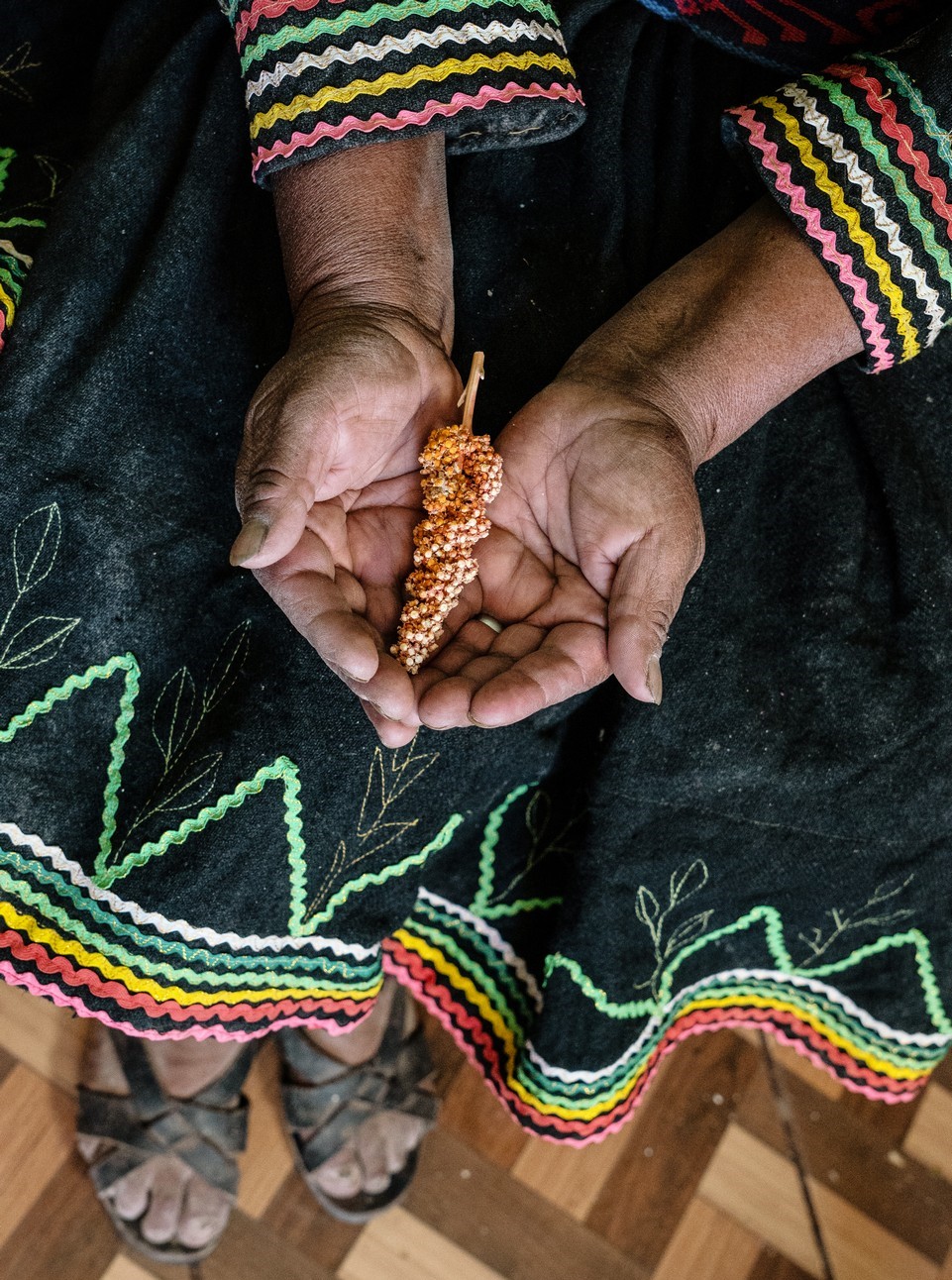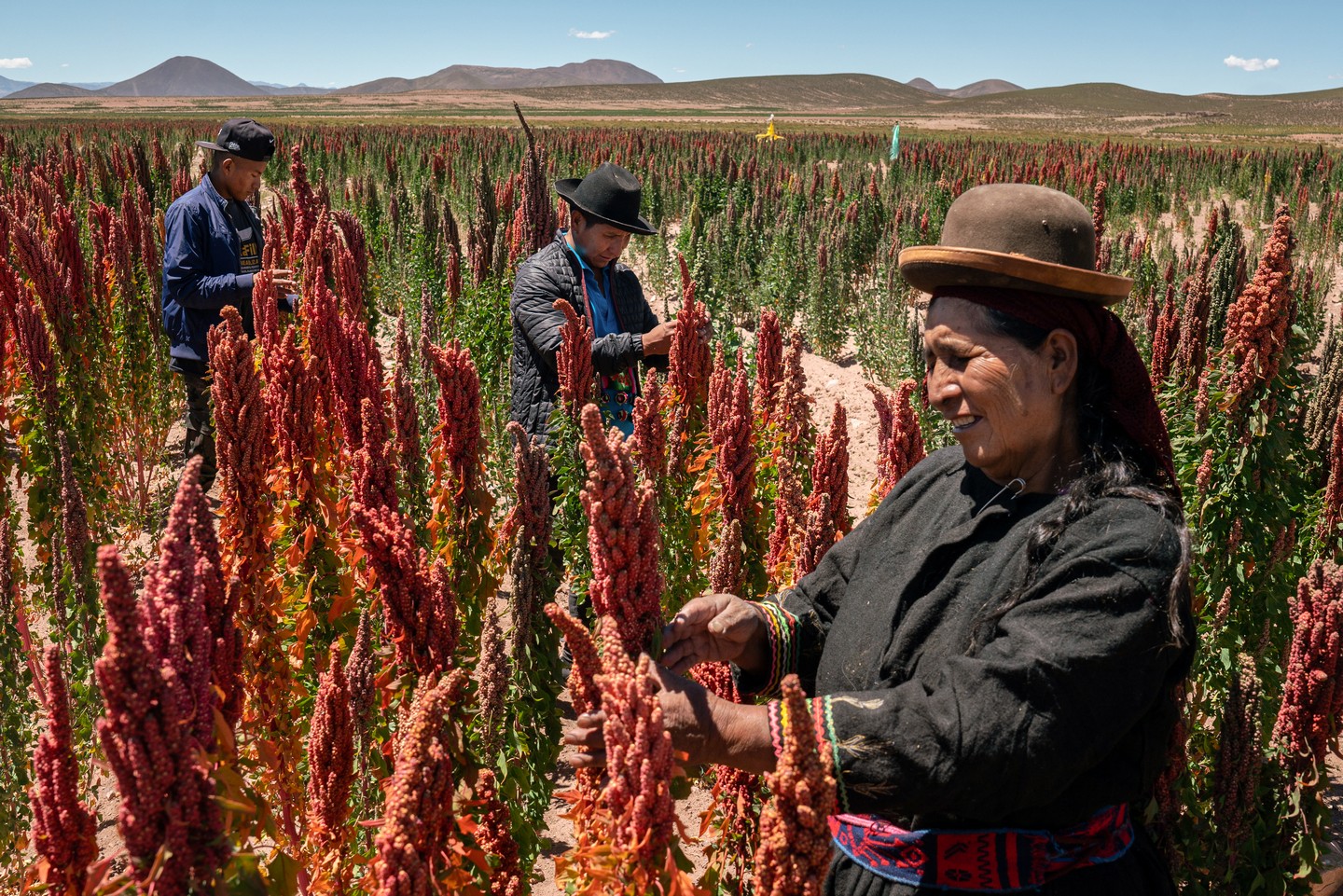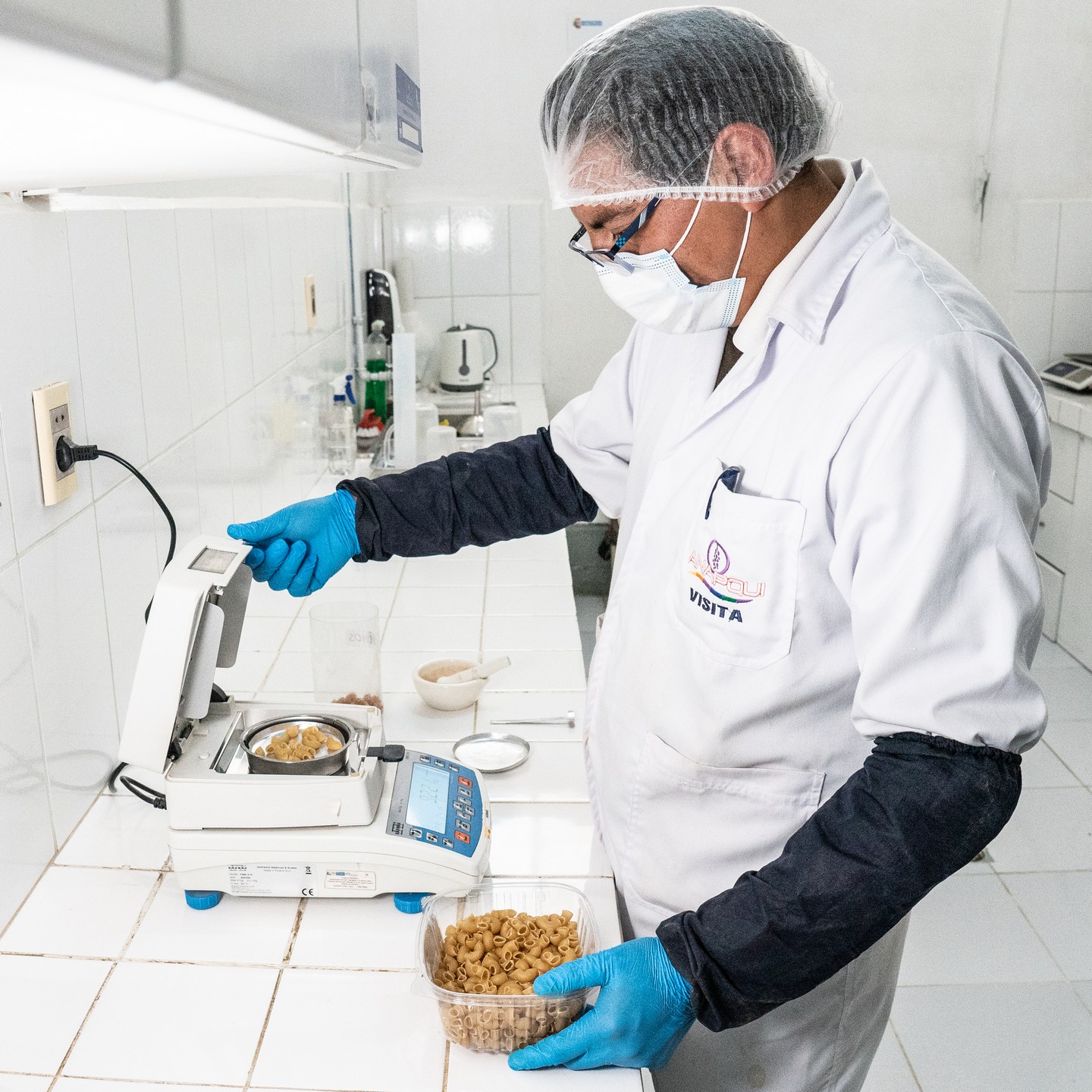The Golden Grain of the Andes
Text and photos by Karl Mancini
Abridged by Syharn Shen (沈思含)
The Golden Grain of the Andes
Text and photos by Karl Mancini
Abridged by Syharn Shen (沈思含)

Cleto Benitez Lopez is a local quinoa producer in Bolivia's Calacoa, a community of 20 families who live from quinoa cultivation at the edge of Salar de Uyuni. The area's unique climate and salt-laden winds create conditions for growing "real quinoa," which is larger and more flavorful due to the volcanic soil.
Quinoa, the ancient "golden grain of the Andes," has been a Bolivian dietary staple for over 7,000 years. Cultivated in the harsh highlands, it offers a rich nutrient profile, including all nine essential amino acids. Since the 1970s, global health trends have turned this traditional crop into a highly sought-after superfood. As the world gorged on its health benefits, its price soared by an astonishing 600% between 2000 and 2008, peaking in 2013, partly thanks to the International Year of Quinoa declared by the FAO. Today, quinoa has become the holy grail of cereals, is included in many types of diets, and is essential for the nutrition of vegans, vegetarians and those with celiac disease. Two-thirds of the quinoa produced in Bolivia is now exported globally, of which 54% goes to the United States, 32% to Europe and 6% to Canada.
This increased demand transformed the Bolivian agricultural landscape. Quinoa's global popularity led to a shift from 10,000 to 50,000 hectares being dedicated to its cultivation. This high demand, however, came at a steep environmental price as farming shifted from traditional methods focused on environmental integrity to intensive monocultures. In 2018, prices plunged to $0.60 per pound, forcing many Bolivian farmers into a dire situation. Many had to find secondary employment in tourism and the restaurant sector. Others intensified farming efforts, which led to soil degradation and nutrient loss. Farmers who once herded large herds of llamas also started removing llamas from their lands to free up space for quinoa production. The environmental degradation is palpable. Reduced llama herding has diminished natural fertilization, chemical fertilizers are making inroads, and soil erosion is increasing. The growing use of agricultural machinery has also disrupted the soil's natural balance, exacerbating issues like parasite proliferation.

In the Bolivian community of Calacoa, Esperanza Zarate Lopez holds an ear of quinoa in her hand. Quinoa is also celebrated on her dress.
Bismark, from a family of traditional quinoa farmers and llama breeders, reflects: "Everything was manual. My father and uncles would get together and we would all ride together in one of their uncles' truck to the family plot to harvest quinoa. We were more than 10 people and we slept in the truck inside a tent. We woke up in the morning, prepared breakfast together and spent the whole day working in the fields." The move to industrialized agriculture has upended these traditions. Families often go into debt to buy a tractor, and small producers are severely affected by climate change and low quinoa prices.
Despite modernization, some regions, especially between the departments of Oruro and Potosi, still cultivate quinoa traditionally. These regions are home to a unique quinoa variety, "Quinua Real," whose growth conditions can't be replicated elsewhere. Those who cultivate quinoa near the Salar de Uyuni enjoy unique volcanic soil and climatic conditions that give their crop a distinct flavor and size. However, climate change is endangering even these resilient strains.

In Calacoa, Bolivia, Esperanza Zarate Lopez and other local producers monitor the quinoa fields for parasites and worms that may damage the crop.
Traditional preparation methods are still employed in these regions. Men focus on cultivation while women take care of llama breeding. During the Carnival season, farmers perform rituals praying for a good harvest. More than just a food source, quinoa is a way of life deeply embedded in the culture and spirituality of the Andean people.
Anapqui, an association of about 1,800 quinoa-producing families from these regions, aims to maintain traditional cultivation methods. They manage their marketing directly, exporting different quinoa varieties and products globally. Their mission centers on environmental sustainability and community welfare.
Climate change is the looming monster. Unpredictable and harsh weather conditions are affecting the yield and quality of quinoa crops. At times, the rains are so scarce yet sudden that instead of aiding crop growth, they result in flooding due to the eroded soil. This threatens not just the crop but entire communities dependent on it.

At Anapqui's quality control lab in El Alto, an engineer is conducting a test on pasta for moisture levels, impurities, and cooking time. If the product meets all criteria, it is released into the market.
The University of La Paz is also contributing to quinoa research, developing advanced techniques to study its beneficial macromolecules. Called "chisiya mama," or "mother of all seeds," by the Incas, quinoa once had a sacred role. The Spanish conquest led to its near elimination, but global demand has revived it, albeit with a form of economic neocolonialism.
The challenge ahead lies in balancing global demand with local tradition and environmental sustainability. Supporting organizations like Anapqui, which focus on organic farming and community welfare, might be a step towards a more sustainable future for this golden grain.
Contact Us | Plan a Visit | Donate
8 Lide Road, Beitou 11259, Taipei, Taiwan
886-2-2898-9999
005741@daaitv.com
©Tzu Chi Culture and Communication Foundation
All rights reserved.
